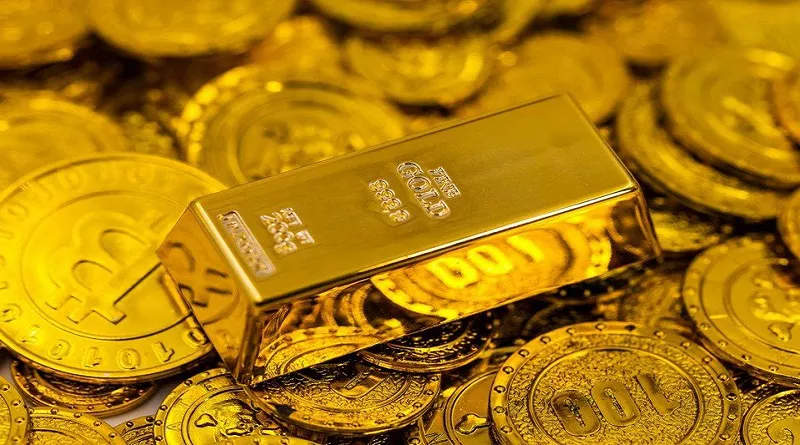Gold has always held a prominent position in the global economy, representing wealth, stability, and a standard for currency. Understanding the price of gold in 1880 offers valuable insights into the economic climate of the time, as well as the evolution of monetary systems. This article will explore the historical context of gold pricing, the factors influencing its valuation, and its implications for contemporary economic understanding.
Overview of Gold’s Historical Significance
Gold has been a medium of exchange for thousands of years. Its unique properties—scarcity, divisibility, durability, and fungibility—make it an ideal form of currency. Across various civilizations, gold has served not only as money but also as a symbol of power and prestige.
The Role of Gold in the Economy
Throughout history, gold has been integral to the development of monetary systems. Its role can be summarized as follows:
Medium of Exchange: Gold was used as currency in ancient societies, facilitating trade and commerce.
Store of Value: Gold has maintained its value over time, serving as a hedge against inflation and economic uncertainty.
Standard for Currency: Many nations adopted the gold standard, linking their currencies to gold reserves to stabilize their economies and promote trust in their financial systems.
The Price of Gold in 1880
In 1880, the price of gold was approximately $20.67 per troy ounce. This figure was significant for several reasons:
Stability: The fixed price indicated a stable economic environment influenced by the gold standard.
Investment: Investors viewed gold as a reliable store of value during times of economic change.
The Gold Standard and Its Impact
Establishing the Gold Standard
The gold standard was officially established in the United States in 1900, but its roots were planted earlier in the 19th century. Countries such as Great Britain had already begun adopting gold-backed currencies, establishing a precedent for monetary policy worldwide.
The Coinage Act of 1792: This act laid the foundation for the U.S. monetary system by defining the dollar in terms of a specific weight of silver and gold.
The Gold Rushes: The California Gold Rush (1848-1855) and subsequent discoveries contributed to a significant influx of gold into the economy, reinforcing the value of gold as a stable currency.
See Also: The Price of Gold in 1849: A Historical Perspective
Factors Influencing the Gold Price in 1880
Several key factors influenced the price of gold in 1880:
Supply and Demand: The balance between gold supply from mining operations and the demand for gold in jewelry and as a reserve played a critical role in stabilizing prices.
International Trade: The interconnectedness of global economies meant that fluctuations in gold prices in one country could affect others. The gold standard facilitated international trade, as currencies were often pegged to gold.
Economic Policies: Government policies, including those related to the money supply and banking regulations, impacted the price of gold. The commitment to the gold standard helped to stabilize prices.
Economic Climate of the 1880s
The economic landscape of the 1880s was marked by significant changes:
Industrialization: The Industrial Revolution continued to reshape economies, particularly in the United States and Europe. Rapid industrial growth increased the demand for capital investment, which relied on stable currencies.
Transportation Advances: The expansion of railroads and steamships revolutionized trade, creating a more interconnected global economy. This connectivity further emphasized the need for a stable monetary system.
The Economic Factors at Play
Several broader economic trends influenced the price of gold in 1880:
Global Trade Expansion: With the advent of new technologies and transportation methods, global trade expanded, necessitating stable currencies.
Inflation Control: Governments using the gold standard could limit inflation by tying the money supply to gold reserves, fostering trust in currencies.
Monetary Stability: Fixed gold prices provided a sense of monetary stability, encouraging investment and economic growth.
The Implications of Gold Pricing
Understanding the price of gold in 1880 has several implications:
Economic Policy Insights
Monetary Policy Development: The stable price of gold demonstrated the effectiveness of the gold standard in promoting economic stability. Lessons learned from this period continue to inform modern monetary policy.
Trust in Financial Systems: The consistent valuation of gold fostered trust in financial institutions and currencies, which remains a vital aspect of economic health today.
Investment and Wealth Preservation
Gold has historically been viewed as a safe investment, particularly during economic uncertainty. The price stability observed in 1880 encouraged individuals and institutions to invest in gold as a hedge against potential economic downturns.
Long-Term Economic Trends
Examining gold prices over time reveals broader economic trends and patterns. The stability observed in 1880 contrasts sharply with the price volatility experienced in later decades, especially during times of crisis, such as the Great Depression or the 2008 financial crisis.
Conclusion
The price of gold in 1880, fixed at approximately $20.67 per troy ounce, reflects a period of economic stability and growth. The gold standard played a crucial role in shaping monetary policy, facilitating trade, and instilling trust in financial systems. Understanding this historical context provides valuable insights into contemporary economic principles and the enduring significance of gold in global finance. As we continue to navigate complex economic landscapes, the lessons from the past remain relevant, emphasizing the timeless allure and importance of gold as a cornerstone of wealth and stability.
You Might Be Interested In
- What is the Going Price for Gold?
- Is GLD the same as XAUUSD?
- Why is Gold Trading Considered the Best?


